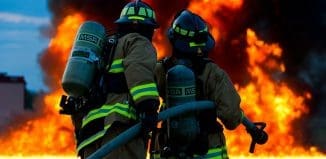Performance Analysis of RF-Based Electronic Safety Equipment
This post is also available in:  עברית (Hebrew)
עברית (Hebrew)

The National Institute of Standards and Technology (NIST) has participated in a multi-year project to support the development of performance metrics and test methods for radio-frequency (RF)-based electronic safety equipment used by the public-safety community. The work reported here focuses on side-by-side measurements of radio-propagation environment characteristics and actual wireless device performance in two key representative emergency responder environments, a subway station and a high-rise building. Identifying the impacts of path loss on wireless device performance in various environments enables the development of standardized laboratory-based test methods that simulate the conditions under which electronic safety equipment will be used in the field. The test methods can then be incorporated into consensus standards for this equipment.
The analysis presented on RF PASS tests were performed in a New York subway station and the Empire State Building because these types of structures provide challenging RF propagation-channel environments. In the subway, the RF PASS systems were limited in their ability to communicate beyond the initial entrance level. Without the use of repeaters, most of the systems could communicate only a short distance beyond the bottom of the stairwell that connected the token booth corridor to the street. Two systems used repeaters to extend the coverage area. When a repeater was located at the base of the stairwell leading up to the street, those two systems were able to communicate the RF PASS alarms between the street level and the first passenger platform. However, with only a single repeater, neither of the two repeater systems was able to communicate between the external receive site and the second passenger level. This suggests that for structures with sizable subterranean sections, a repeater system will likely be required to reach an external incident command post. If the structure has multiple subterranean levels of increasing depth, a multiple-hop relay system will likely be necessary to ensure the reliability of the communication channel.
In the path-loss measurements and analysis performed at five frequencies, ranging from 430 MHz to 2405 MHz, there are several important insights. Based on the upper adjacent values in the box-plot statistical representation of the path-loss data from the Empire State Building (see Figure 36), path-loss values of 140 dB to 175 dB are possible for high-rises. For the subway, the path-loss values exceed 210 dB to 240 dB at the lower two passenger platforms (see Figure 35). The frequency dependence is more pronounced for the Empire State Building results, but less apparent in the subway data. Thus, while a system may function well at the lower end of the frequency spectrum in the above ground portions of a large building, the subway results demonstrate that subterranean structures can cause path-loss values greater than 200 dB across the 430 to 2400 MHz range.
The testing completed here focused on RF PASS system performance and RF propagation-channel measurements in a high-rise and subway station. While a primary goal of the effort was to look at the correlation between the system performance and path-loss behavior, a secondary goal was to gather path-loss data in two high-attenuation settings. Thus, parameter values for log-normal distributions that will allow simulation of the measured path-loss conditions are included in this report. The authors hope that the data presented here, along with future sets of data, can be used to develop a complete suite of test methods, not only for RF-based PASS systems, but also for other RF-based electronic safety equipment. The path-loss values obtained here are general and could be used to develop standards for other equipment as the need arises for standards for these systems.






























